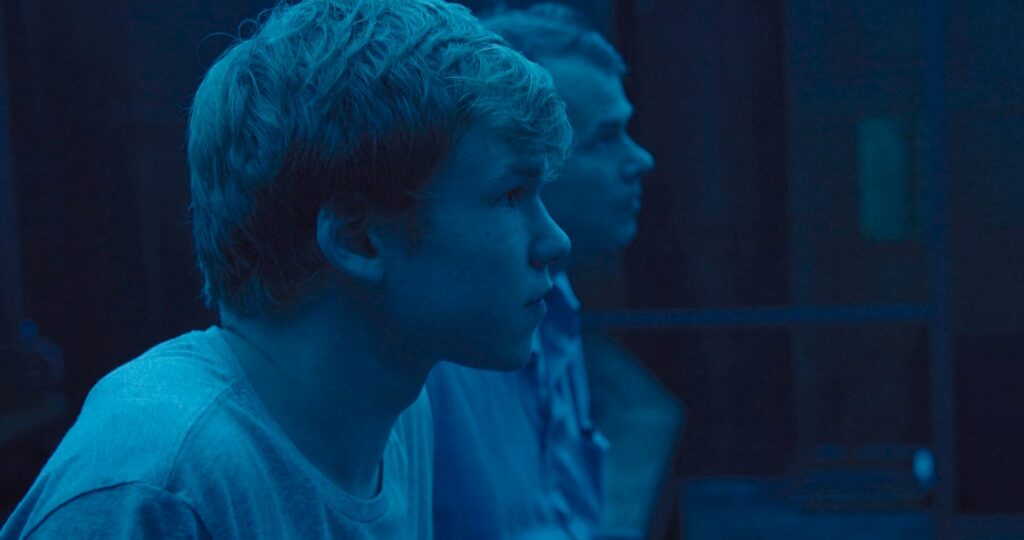Jerry Rothwell’s new masterpiece will forever change the possibilities around what a film can be.
When a colleague learned that I was planning to watch The Reason I Jump, they advised I wear earphones. Though perplexed, I nonetheless followed their advice – and was extremely grateful for it. So much so, in fact, that I will pass this piece of advice on to you.
As a binaural recording, this film provides an auditory experience unlike any other. Though made for cinema, it is equally astounding at home, so much so that it almost feels like this documentary was made for the small screen, for earphones and quiet nights in. As such, if you can do try to watch it like that. Better yet, watch it in a pitch-black room, snuggled up in a pile of blankets and pillows, with your earphones in. Nothing else will do for this intoxicatingly immersive experience; it is a playground for your senses!

The Reason I Jump tells the true and fascinating story of Naoki Higashida’s life (author of the bestselling memoir of the same name), as well as that of other characters who share his condition. For Higashida, the documentary looks specifically at how his worldview and life experiences have been shaped by autism. In particular, it celebrates his refusal to change or feel bad for being different. For our other characters: Amrit in India, Ben and Emma in the U.S, Joss in England and Jestina in Sierra Leone, the documentary explores their day-to-day joys and struggles, as well as their own attitudes to autism.
Although the entire film can be deemed an emotional gut-punch, the most poignant moments are undoubtedly when the documentary focuses on the characters’ relationships with other people, in particular how they relate to their close family members. Here we start to see not only how autism – and society’s attitude to being different, generally – have affected our characters’ lives, but how it has affected those around them. Dipping between Hagashida’s own story, beautifully narrated by Jordan O’Donegan, and those of the film’s other characters, we are openly invited to explore their worlds and learn from their experiences.

As David Mitchell states, Higashida’s book is “like cartography. He makes a map of his mind”. So can also be said of the film. With ever-exquisite cinematography, we are taken on a spellbinding journey within Higashida’s mind and are shown sights far more wondrous and mesmerising than anything one could create for even the most ambitious fantasy world.
Emotionally compelling throughout, we learn of Hagashida’s troubled childhood through Jim Fujiwara’s beautiful performance (who acts as a younger Hagashida). In these scenes, narrator O’Donegan details the pain that Hagashida suffered as a consequence of limited language capabilities and social isolation. In other difficult moments, we see how our other characters become upset by overstimulation, with Joss being a subject who particularly struggles during the film. Through the camera, we are allowed to bear witness to their most vulnerable moments, a trust which both thrills and weighs heavy with responsibility.
Alongside these, however, are moments of hope and celebration: Amrit finds her voice through art and proudly displays her work in a large exhibition; Ben and Emma overcome obstacles to communicate with those around them through keyboards, modern technology offering them a chance which they would otherwise never get; lastly, there is Jestina, who proves that empathy and understanding can always be found, even in communities that struggle to understand and accept conditions like autism.
Celebrating the intelligence and creativity of people with autism, as well as those who love them, The Reason I Jump simultaneously praises its incredible subjects and forces the audience to face its unfair privilege. One such privilege being the ability to communicate and connect with other people with little to no effort.

While it opens as a documentary, and, to some extent, continues in this fashion throughout, we soon see the film start to evolve from a documentary about those with autism, to a multi-sensory experience wherein the audience is permitted a glimpse into how the world is perceived by someone with autism. Overwhelmed by the stunning and disarming cinematography, and occasionally discomfiting audio, you are made to experience the world the way our subjects do, through all the highs and lows. While you never get used to it, the effect certainly isn’t repellent. Instead, you are left with a film that compels its audience to watch on, fascinated by lives so similar and yet different to their own.
More than just a documentary, The Reason I Jump is the beginning of a conversation. It not only explores autism, challenging the perspective we are too often presented with, but invites us to learn from real people and question what we thought we knew. It looks to the past, but most excitingly, looks to the future – one it invites us to help shape.
A sensory delight, The Reason I Jump is the most immersive, transportive cinematic experience you’re likely to have encountered in recent memory. It leaves you feeling more a part of the world within your screen than you could hope for, allowing the story to wash over you and to develop a greater understanding of the experiences of those with autism.
Striking the perfect tone between discomforting and uplifting, it forces the audience to face the many challenges that its subjects contend with while suggesting a far more positive future is possible, so long as we start to have more fruitful conversations from this moment on.
The Reason I Jump is releases in Picturehouse cinemas on 18th June.
